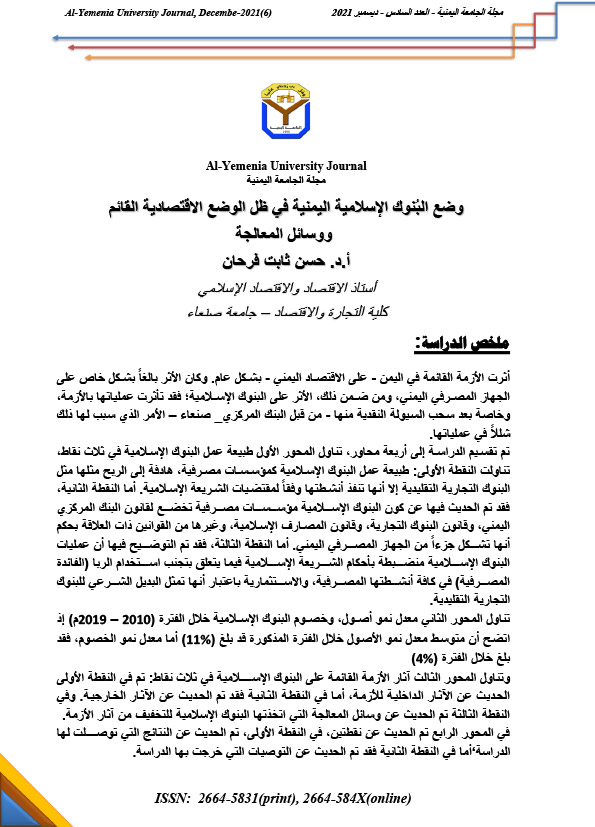The Status of Yemeni Islamic Banks in the Current Economic Situation and Means of Treatment
Abstract
The current crisis in Yemen has affected the Yemeni economy in general. The impact was particularly severe on the Yemeni banking system, including the impact on Islamic banks; their operations were affected by the crisis, especially after the withdrawal of cash liquidity from them - by the Central Bank - Sana'a - which caused paralysis in their operations.
The study was divided into four axes. The first axis addressed the nature of the work of Islamic banks in three points. The first point addressed the nature of the work of Islamic banks as banking institutions, aiming for profit like traditional commercial banks, except that they carry out their activities in accordance with the requirements of Islamic law. As for the second point, it was discussed that Islamic banks are banking institutions subject to the Central Bank of Yemen Law, the Commercial Banks Law, the Islamic Banks Law, and other related laws, given that they constitute part of the Yemeni banking system. The third point clarified that the operations of Islamic banks are governed by the provisions of Islamic Sharia regarding avoiding the use of usury (bank interest) in all their banking and investment activities, considering that they represent a legitimate alternative to traditional commercial banks.
The second axis dealt with the growth rate of assets and liabilities of Islamic banks during the period (2010-2019 AD), as it became clear that the average growth rate of assets during the mentioned period reached (11%), while the growth rate of liabilities reached (4%) during the period.
The third axis dealt with the effects of the crisis on Islamic banks in three points: The first point discussed the internal effects of the crisis, while the second point discussed the external effects. The third point discussed the treatment methods adopted by Islamic banks to mitigate the effects of the crisis.
In the fourth axis, two points were discussed. In the first point, the results reached by the study were discussed, while in the second point, the recommendations that the study came out with were discussed.



